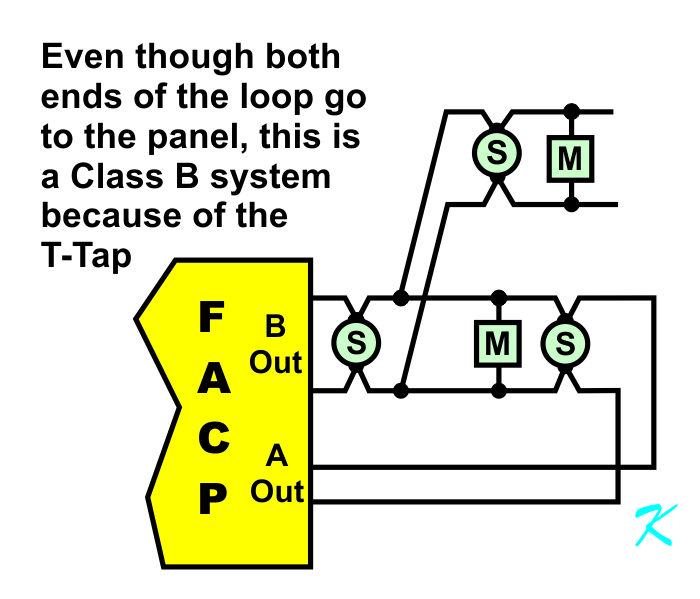"Fire Detection and Alarm Systems (FDAS) are supposed to detect all fires and notify all the occupants of a fire." In other words, an FDAS should always be reliable. That statement, though, is countered by the statement "All electronic systems will eventually break down."
The National Fire Protection Association (NFPA) knows that the first statement should be always true, but they also know that the second statement keeps it from always being true. That's why they came up with a classification system so everyone would know how reliable a circuit in a fire alarm system is going to be. In no particular order of reliability, two of the classifications are: Class A and Class B.
The bottom line for the classification system, though, is that detection devices should always have the ability to send signals to the panel, and the panel should always have the ability to send signals to all the alarm notification appliances, like horns, strobes, and speakers.
It would be nice if electrical circuits always worked, but they don't. Hence, the classifications.
Class A and Class B
With either Class A or Class B, if for any reason a device can't send or receive signals from the panel, the panel will show a trouble. Even if all devices communicate, a failure of the wiring also shows a trouble on the panel.
Class B
When a wire breaks or comes loose, any devices still connected to the panel can communicate, but any devices past the break or loose connection can't communicate.
Class A
With Class A, both ends of the circuit are connected to the panel, so even if a wire breaks or comes loose, all devices are still connected to the panel. In other words, on a Class A circuit, there is a redundant pathway for signals. If one pathway to a device has a broken wire, there is a redundant signal pathway between the panel and the device; all devices are still connected.
Allowed or not allowed isn't really the issue. What circuit does is the issue. If all of the devices can communicate even when the path is broken (a wire comes loose on the SLC), the circuit can be called a Class A Circuit. Classification isn't "What is Allowed", classification is "How It Works".
Are Signaling Line Circuits (SLC) on a Class A System Allowed to be T-Tapped?
In an Signaling Line Circuit, the panel continually polls the devices. With Class A, because both ends of the wire goes to the panel, a single break in the wire won't prevent any devices from communicating. The problems with the wiring will show a trouble, but the life safety aspects of all devices doing their job has not changed.
However, to answer your question about T-Tapping on the Class A circuit, the added Class B circuit would not have a redundant pathway, so some devices might not be connected. If the Class A circuit is T-Tapped, the Class A circuit is no longer a Class A circuit; it is entirely a Class B circuit. This is a life safety / reliability issue.
Is Notification Appliance Circuit (NAC) Wiring Allowed to be Class B in a Class A System?
This is a question for the AHJ. The AHJ is the Authority Having Jurisdiction - the one authorized to make the rules.
According to the NFPA, the AHJ can be:
- The Fire Marshal
- The Chief of the Fire Prevention Bureau
- Someone in the Labor Department
- Someone in the Health Department
- The Building Official
- The Electrical Inspector
- Someone from the Insurance Company
- Even the Building Owner
- Etc.
The NFPA is a little loose on requirements beyond the absolute minimum needed to detect fires and warn people. The NFPA, though, does recognize that the AHJs, at all levels, are authorities that have something to say.
When the writers of the NFPA Code sat down, they intended that if one of the AHJs had more requirements than the absolute minimum shown in the NFPA, whoever had the more stringent requirement has the final say.
So, whether a Class B NAC circuit can be installed in a totally Class A fire alarm system, even if the requirement isn't clear in the NFPA, it can be up to one of these many Authorities Having Jurisdiction.
See
Just Who Is the Authority Having Jurisdiction (AHJ)? for more details.
Douglas Krantz
